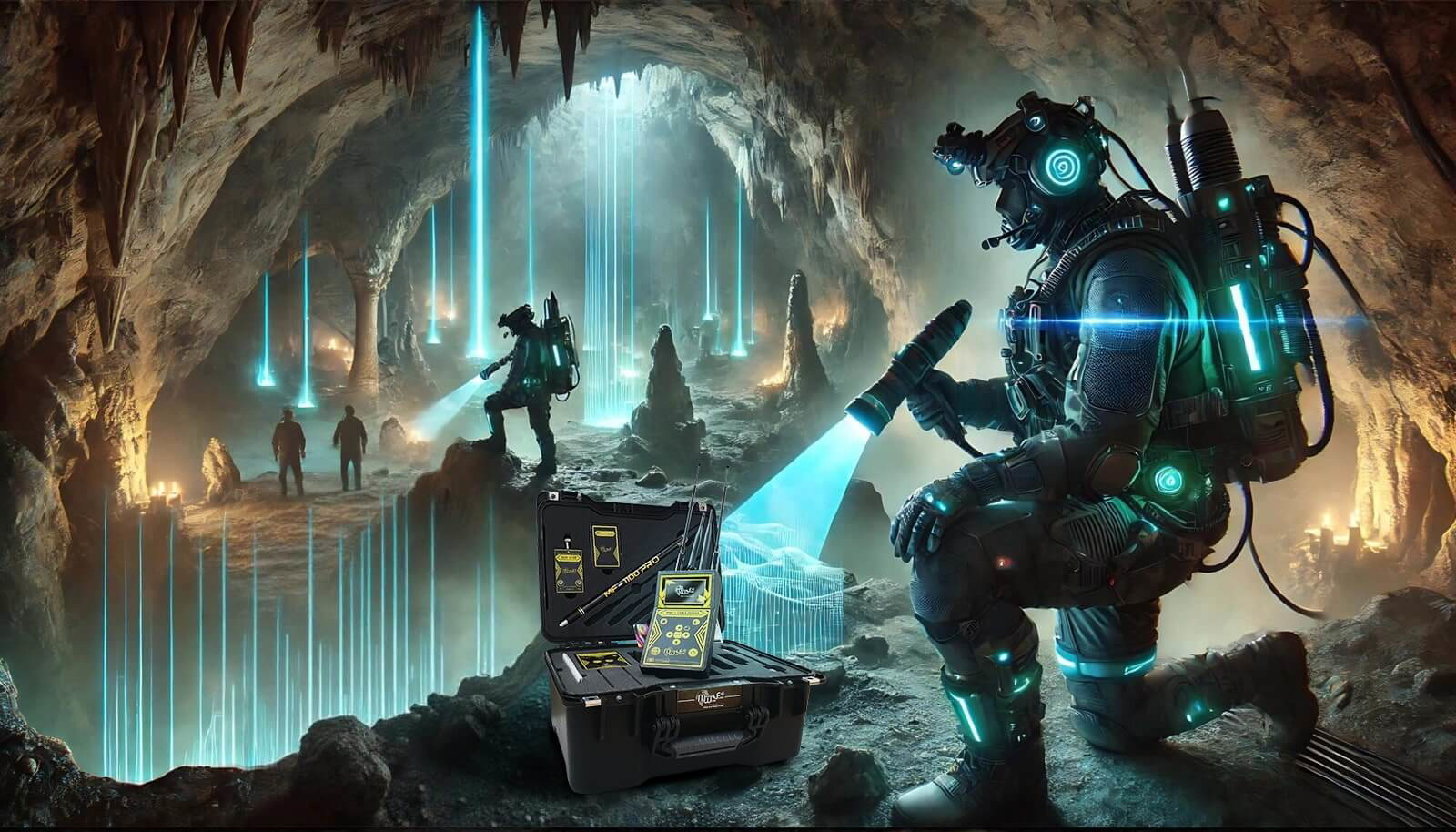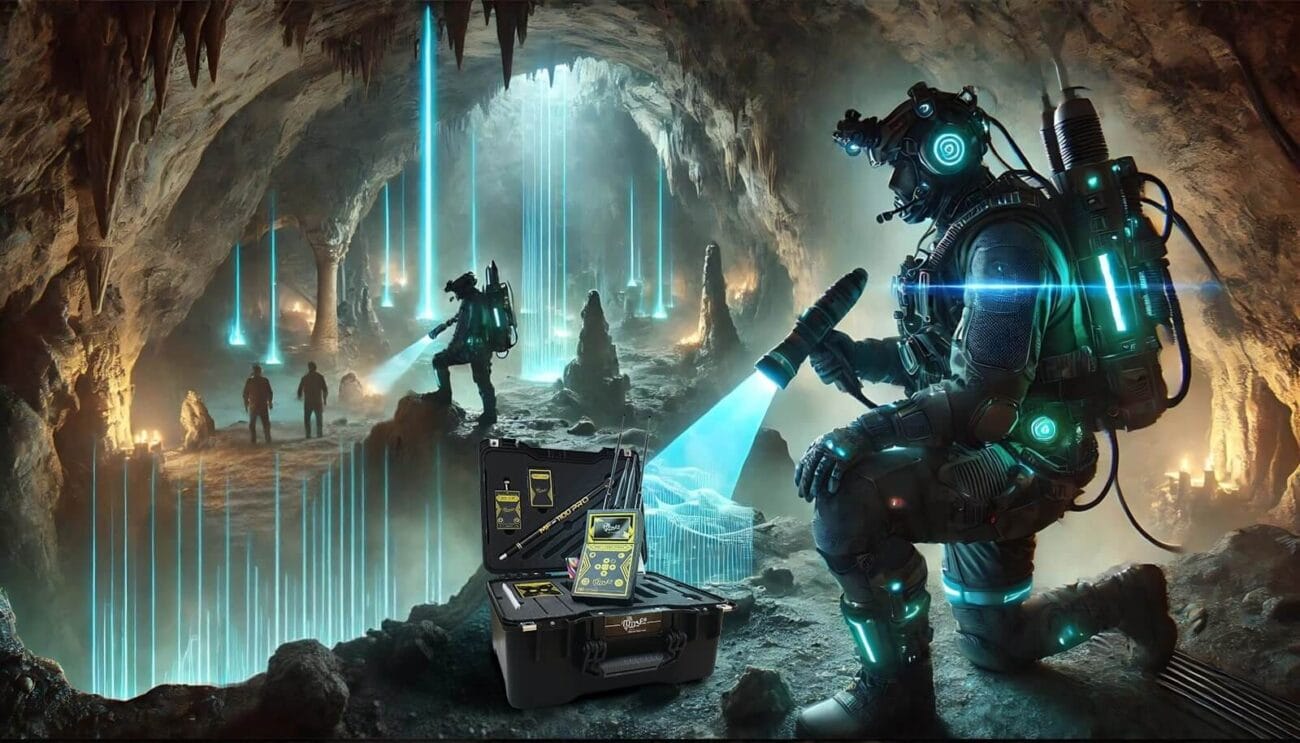Artical
Cave Detectors – Innovative Technology in Cave Exploration and Treasure Hunting

Cave Detectors: Innovative Technology in Cave Exploration and Treasure Hunting
Exploring the hidden depths of caves has fascinated humankind for centuries. The allure of ancient relics, mineral-rich deposits, and concealed treasures drives both professional researchers and passionate hobbyists alike. Today, Cave Detectors—specially engineered devices designed to detect geological formations, minerals, and potential treasures within cave systems—are transforming the field of cave exploration. In this comprehensive guide, we delve into the technology behind cave detectors, their key features, working principles, diverse applications, production processes, and how to choose the right model for your needs.
Table of Contents
- Introduction
- What Are Cave Detectors?
- Key Technological Features of Cave Detectors
- How Do Cave Detectors Work?
- Applications of Cave Detectors
- Our Production Process and Quality Standards
- Safety and Accuracy in Cave Exploration
- Choosing the Right Cave Detector: Tips and Advice
- Customer Experiences and Success Stories
- Frequently Asked Questions (FAQ)
- Future Trends in Cave Detector Technology
- Maintenance and Best Practices
- Conclusion
Introduction
Caves are among the most enigmatic and historically significant natural structures on Earth. Beyond their breathtaking beauty, these underground networks hold secrets of ancient civilizations, rare mineral deposits, and hidden treasures. With the advent of modern technology, Cave Detectors have emerged as essential tools that enable explorers to navigate these dark, uncharted territories safely and efficiently. By leveraging advanced sensor technologies, these devices provide unparalleled accuracy even under the harshest conditions.
As we integrate cave detectors with other advanced systems—such as gold, treasure, gem, and water detection modules—the potential to uncover the mysteries lying beneath the surface increases exponentially. Whether you are an experienced explorer, a professional geologist, or a treasure hunting enthusiast, understanding the technology behind cave detectors is crucial to achieving success in your ventures.
What Are Cave Detectors?

Advanced cave detectors revolutionizing underground exploration—discover ancient artifacts, mineral-rich deposits, and hidden treasures with cutting-edge scanning technology.
Definition and Overview
Cave Detectors are specialized devices engineered to detect the presence of geological formations, minerals, and potential treasures within cave environments. Unlike conventional metal or gold detectors, cave detectors are designed to overcome the unique challenges posed by underground cave systems. They are equipped with enhanced sensitivity and robust construction, making them ideal for harsh, low-visibility, and rugged terrain.
Basic Features
Some of the core features that set cave detectors apart include:
- High Sensitivity: Able to capture faint signals even in deep and complex cave environments.
- Advanced Sensors: Designed to differentiate between various minerals and metals.
- Integrated Modules: Compatibility with additional detection systems such as gold, treasure, gem, and water detectors.
- Durability: Engineered to withstand extreme conditions, including high humidity, temperature variations, and abrasive materials.
Key Technological Features of Cave Detectors
The cutting-edge technology embedded in cave detectors provides significant advantages for users. Below are the primary features that contribute to their effectiveness:
Advanced Detection Technology
Cave detectors use electromagnetic waves and geophysical principles to scan cave interiors. By analyzing frequency differences among various mineral types, these devices can pinpoint areas of high mineral concentration, increasing the probability of discovering hidden treasures and geological formations.
Multi-Mode Scanning Capabilities
Equipped with multiple search modes, cave detectors allow users to conduct both broad-area sweeps and focused, detailed scans. This dual capability ensures that large cave systems can be quickly surveyed while potential points of interest receive a thorough examination.
Integrated Sensor Systems
One of the standout features of modern cave detectors is their ability to integrate with supplementary sensor modules. Whether it’s a module designed for gold detection, treasure hunting, gem identification, or water tracing, these integrated systems work in tandem to deliver precise, actionable data.
Extended Range and Depth Scanning
Cave detectors are optimized for long-range and deep scanning, enabling explorers to detect signals from the farthest and deepest points within a cave system. This capability is particularly vital when dealing with expansive or multi-level cave structures.
How Do Cave Detectors Work?
The operation of cave detectors is based on sophisticated signal processing and data interpretation techniques. Here’s a step-by-step breakdown of their working mechanism:
Signal Emission
The device emits electromagnetic waves that propagate through the cave environment. These waves interact with different materials, and variations in the returned signals indicate the presence of distinct minerals or metallic objects.
Signal Analysis
Once the electromagnetic waves are reflected back, the detector’s advanced software analyzes the signals. This analysis focuses on discerning subtle differences in frequency and amplitude, which helps in identifying specific types of minerals and metals.
Data Processing and Visualization
The processed data is then translated into user-friendly visual representations. Graphs, maps, and digital overlays help users pinpoint exact locations of interest within the cave. High-resolution imaging and real-time data updates further enhance the detection process.
Real-Time Feedback Mechanisms
Cave detectors are equipped with both audio and visual alert systems. These real-time notifications allow users to react immediately to potential discoveries, ensuring that no significant signal goes unnoticed.
Applications of Cave Detectors
The versatility of cave detectors makes them valuable in a wide range of fields. Here are some of the primary applications:
Archaeological Discoveries
Caves often serve as time capsules preserving artifacts, ancient structures, and historical relics. Archaeologists utilize cave detectors to locate hidden chambers, burial sites, and remnants of early human civilization.
Geological and Mineral Research
For geologists, cave detectors are indispensable for mapping underground mineral deposits and geological formations. They help in identifying mineral-rich zones, guiding further exploration and mining efforts.
Treasure Hunting
Treasure hunters have long relied on specialized detectors to uncover lost artifacts, coins, and precious metals. Cave detectors, with their enhanced sensitivity and integrated sensor modules, significantly boost the success rate of such expeditions.
Mining and Geothermal Exploration
Mining operations and geothermal research benefit greatly from the detailed subsurface mapping provided by cave detectors. These devices help in identifying ore bodies, water reservoirs, and areas with geothermal potential, thereby optimizing extraction and resource management.
Environmental and Biological Studies
In addition to treasure and mineral exploration, cave detectors are also used in environmental monitoring and biological research. They can help track water flow patterns, detect changes in mineral composition, and even study unique cave-dwelling ecosystems.
Our Production Process and Quality Standards
At the heart of our cave detector technology lies a commitment to excellence. Our production process adheres to the highest industry standards to ensure that every device meets rigorous performance criteria.
Research and Development (R&D)
- Innovative Technology Integration: Constantly monitoring and integrating the latest advancements in sensor and detection technologies.
- Prototype Development: Creating and refining prototypes through iterative testing and improvements.
- Field Testing: Conducting comprehensive field tests in various cave environments to ensure optimal performance under diverse conditions.
Manufacturing and Assembly
- Premium Material Selection: Using only high-quality, durable materials that can withstand the harsh conditions encountered in caves.
- Precision Assembly: Employing skilled technicians and advanced assembly techniques to ensure each device functions flawlessly.
- Customization Options: Offering bespoke configurations tailored to the specific needs of different users and applications.
Quality Control and Testing
- Rigorous Functionality Tests: Every unit undergoes extensive testing to verify its sensitivity, accuracy, and durability.
- Performance Benchmarking: Comparing device performance against industry standards to guarantee superior results.
- Continuous Improvement: Incorporating customer feedback and technological advancements to continuously enhance product quality.
Safety and Accuracy in Cave Exploration
Ensuring user safety and data accuracy is paramount when venturing into underground environments. Our cave detectors are designed with multiple safety features:
- Robust Construction: The rugged build of our devices ensures they withstand impacts, moisture, and temperature fluctuations.
- Advanced Calibration Systems: Automatic calibration routines maintain device accuracy, even during prolonged use.
- Emergency Alerts: Integrated audio and visual alerts notify users of potential hazards, ensuring timely precautions.
- User-Friendly Interface: An intuitive control panel and clear data visualization help minimize operator error, thereby enhancing overall safety.
Choosing the Right Cave Detector: Tips and Advice
Selecting the perfect cave detector is crucial for a successful exploration. Consider the following tips to make an informed decision:
- Determine Your Primary Use: Whether for archaeological research, treasure hunting, or geological studies, your primary purpose will dictate the necessary features.
- Compare Technological Specifications: Evaluate the sensitivity, scanning range, and integrated sensor capabilities of different models.
- Assess Durability and Build Quality: Ensure the device is designed to handle the challenging conditions of underground exploration.
- Read User Reviews and Case Studies: Gain insights from the experiences of other professionals and enthusiasts.
- Review Warranty and Support Options: Choose a manufacturer that offers comprehensive technical support and warranty services.
Customer Experiences and Success Stories
The true measure of any advanced technology lies in its real-world application. Numerous explorers, archaeologists, and researchers have attested to the effectiveness of our cave detectors:
Example Success Story
A team of archaeologists embarked on a challenging expedition into a previously uncharted cave system. Utilizing our state-of-the-art cave detector, they successfully uncovered a hidden chamber filled with ancient relics and pottery fragments dating back millennia. The device’s high sensitivity and real-time feedback allowed the team to meticulously map the cave’s interior, leading to groundbreaking discoveries that have since rewritten local history.
Frequently Asked Questions (FAQ)
1. What are Cave Detectors and How Do They Work?
Cave detectors are specialized devices designed for detecting geological formations, minerals, and potential treasures within cave environments. They work by emitting electromagnetic waves, analyzing the reflected signals, and processing the data to provide visual and auditory feedback to the user.
2. How Do Cave Detectors Differ from Traditional Metal Detectors?
Unlike traditional metal detectors, cave detectors are engineered to operate under the extreme conditions of cave environments. They offer enhanced sensitivity, multi-mode scanning, and integrated sensor modules that allow them to differentiate between various minerals and metals with greater accuracy.
3. In Which Fields Can Cave Detectors Be Used?
Cave detectors have a wide range of applications including archaeological explorations, geological research, treasure hunting, mining operations, geothermal exploration, and environmental studies.
4. How Often Should I Calibrate My Cave Detector?
Our devices feature automatic calibration systems that continuously adjust during use. However, periodic manual checks and calibration are recommended to ensure long-term accuracy, especially before major expeditions.
5. What Kind of Warranty and Support Do You Offer?
We stand behind our products with a comprehensive warranty and dedicated customer support team. Each device undergoes strict quality control and is backed by extensive technical support and service packages.
Future Trends in Cave Detector Technology
As technology evolves, so do the capabilities of cave detectors. Some emerging trends include:
Integration with Artificial Intelligence (AI)
- Predictive Analysis: AI algorithms can predict geological formations and optimize search patterns.
- Enhanced Signal Processing: Machine learning can further refine data interpretation, reducing false positives.
Improved Connectivity and Data Sharing
- Real-Time Cloud Integration: Enable explorers to share data instantly with remote teams.
- Mobile App Compatibility: Seamless integration with smartphones and tablets for on-the-go analysis.
Eco-Friendly and Sustainable Designs
- Energy-Efficient Components: Innovations aimed at reducing power consumption during long expeditions.
- Recyclable Materials: A focus on environmentally sustainable manufacturing processes.
Maintenance and Best Practices
Proper care and maintenance of your cave detector are essential to ensure longevity and optimal performance. Here are some best practices:
Regular Cleaning and Inspection
- Post-Expedition Maintenance: Clean the device thoroughly after each use to remove dust, moisture, and debris.
- Routine Inspections: Check for any physical damage or wear on the sensor components and casing.
Software Updates and Calibration
- Firmware Upgrades: Keep the device’s software updated to benefit from the latest features and security patches.
- Scheduled Calibration: Perform regular calibration tests to maintain detection accuracy.
Safe Storage
- Protective Cases: Store the device in a rugged, waterproof case to safeguard it from environmental damage.
- Controlled Environment: Maintain storage in a cool, dry place to prevent corrosion and component degradation.
Conclusion
Cave Detectors represent a significant breakthrough in the realm of underground exploration. Their advanced detection systems, multi-mode scanning, and robust build quality provide explorers with the confidence and precision needed to navigate complex cave environments. Whether you are pursuing archaeological discoveries, engaging in treasure hunting, or conducting geological research, choosing the right cave detector is crucial for success.
By integrating cutting-edge technology with user-focused design, our cave detectors not only enhance safety and accuracy but also open up new possibilities for uncovering the hidden treasures of our planet. As the field continues to evolve, staying informed about the latest trends and best practices will ensure that every expedition is both fruitful and secure.
If you’re ready to embark on your next adventure into the unknown, explore our latest range of Cave Detectors and experience the future of cave exploration technology.


